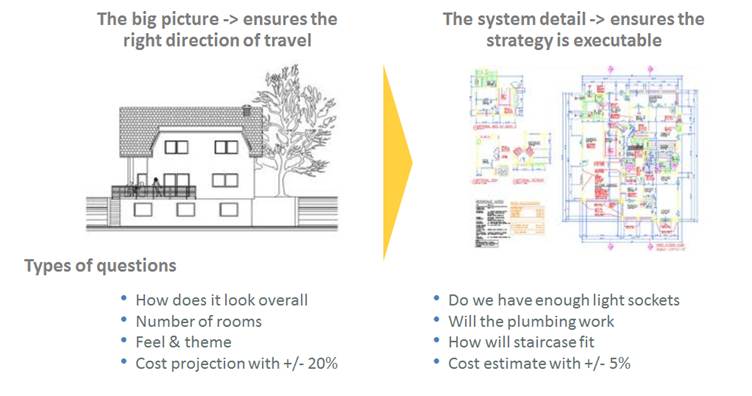Macro vs micro design
Article by Rupert Morrison on how organizational design means getting both the Macro and Micro views of the organization right. Find out how.
When designing an organization, most people think of the big questions. Is it a product or functional organization? How do you balance the need to be local for customer responsiveness or increased cost control vs the need to be global for functional excellence or improved innovation. It is all about ensuring the strategy can be delivered. Trade-offs need to be made, so design criteria created to help make those.
Once the big picture, or Macro design decisions have been made, what about the detail? An analogy is the planning process for building a house. It is important to sort the themes, answer the big questions first. How many rooms? What budget? Look & feel? Once this is done, equally important is to then sort the detail. Lighting & electrics; plumbing; finishes.
Anyone who has ever built or done major rework to a house knows full well the perils of not doing this detailed planning. The cost of last minutes changes. The delays and escalation of cost. The feeling of being out of control. The breakdown in relationships and trust between all the parties.
When building a house, good architects and project managers focus on getting the detail right. So why not when designing an organization?
Why not?
- Because it is hard
- It isn’t the sexy thing
- It isn’t as fun
- There weren’t the tools.
So how should it be done?
By applying micro design techniques; by making it visual; by getting down to the role level in terms of: responsibilities (for processes & activities, decisions, objectives) and competencies; rightsizing; understanding the interfaces and how it should really work in practice. Having designed organizations at the Macro level, we realized you also need to get the Micro level right. The Macro and Micro views of the world are not mutually exclusive. They need each other in equal measure.
